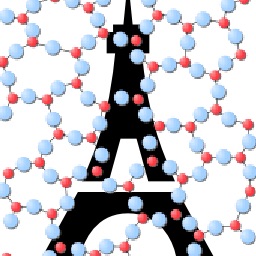Topological Origins of the Mixed Alkali Effect in Glass
The mixed alkali effect, the deviation from expected linear property changes when alkali are mixed in a glass, remains a point of contention in the glass community. While several earlier models have been proposed to explain mixed alkali effects on ionic motion, models based on or containing discussion of structural aspects of mixed-alkali glasses remain rare by comparison. However, transition-range viscosity depression is many orders in magnitude for mixed-alkali glasses, and the original observation of the effect (then known as the Thermometer Effect) was of the highly anomalous temperature dependence of stress and structural relaxation time constants. With this in mind, a new structural model based on topological constraint theory is proposed herein which elucidates the origin of the mixed alkali effect as a consequence of network strain due to differing cation radii. Discussion of literature models and data alongside new molecular dynamics simulations and experimental data are presented in support of the model, with good agreement.
